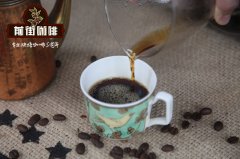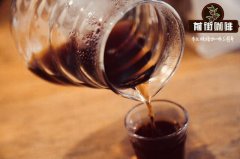What kind of beans do you use for hand-made coffee? Faramy Manor Red Honey treated Coffee | Coffee Origin

Professional coffee knowledge exchange more coffee bean information please follow the coffee workshop (Wechat official account cafe_style)
Coffee origin: Costa Rica
Name of the manor: Faramy Manor Tarazu, Costa Rica
Treatment: red honey treatment
Bean seed: 100% Arabica kaduai seed
Flavor: milk chocolate toffee apple lemon honey syrup taste full and solid
Baking degree: shallow and medium baking
Altitude: 1700m
Award record: 2013 COE third Runner-up Award-winning Manor
Farami is located in the Tarrazu producing area of Costa Rica (Costa Rica), on slopes 1600-1700 meters south of the Taramanca Mountains, with a pleasant climate and fertile volcanic soil, jointly run by Juan Luis Fallas Mata and his wife Maria Eugenia Ramirez. Adhere to the natural agricultural law, 100% comprehensive farm concept management.
The microbatches produced by Faramis are famous because they specialize in producing all kinds of high-quality honey-processed coffee, hand-picking only dark purple coffee cherries and peeling the coffee on cold nights. In a small temperature-controlled room, the owner carefully maintains the subtle sweetness that gradually melts into the beans from the jelly.
Faramy Manor Farami is located in Tara Zhu producing area Dota Tarrazu. The owners Juan Louis Juan Luis and Maria Maria have great enthusiasm for farm life. They make full use of all the farm residues in the manor to strive to achieve the goal of self-sufficiency and sustainable management. In addition to growing coffee, they also raise a variety of livestock, including 25 breeding pigs, 8 sheep, 3 goats, 1500 broilers, 50 laying hens and more than a dozen ducks and geese. As soon as we entered the manor, there were surprises everywhere: goats came forward for a walk, piglets snuggled up to their mother to suck milk, and chickens chirped and looked for food by the side of the road.
Louis made full use of livestock waste and coffee peel to make organic compost to give coffee trees enough natural nutrients, and built two biomass gas generators to use livestock manure and coffee fermentation juice to produce gas for family cooking, and built a greenhouse with African-style scaffolding for coffee and tomatoes in winter.
Faramy Manor is a coffee farm inherited from two families Fallas and Ramirez, so it is named Farami; Lewis and his wife are committed to living in harmony with the natural environment. Faramy has not used chemical herbicides for 14 years, and pays meticulous care for every aspect of the coffee making process, such as using African scaffolding for sun drying, surrounded by nets to prevent manor animals from entering. Coffee is planted on the steep hillside above the main building of the manor, more than 1650 meters above sea level. Sitting on the stones under the shade tree overlooking the valley below and the street view of the town of Santa Maria makes people feel cheerful and happy! The cold night of the manor helps honey-treated batches to produce a wonderful pulp fermented aroma, and the sweetness is more obvious! The warehouse where raw beans are stored is a temperature-controlled independent space; this effort has also succeeded in producing delicious coffee, winning the third place in CoE in 2013 and the 17th 86.93 points in 2014!
Arabica coffee variety Catuai is a cross between Kaddura (Caturra) and Mondonovo (Mundo novo). The tree of Kaddura is short and the height of Mondonovo is high, and it is easier to harvest after the improvement of height. The taste is sweet and sweet, the sweetness performance is similar to Cattura, less sour, improve the taste is not good, poor flavor, good balance.
[honey treatment] Honey / Pulped Natural / Semi-dry Process
Between the sun drying method and the water washing method, after the peel and pulp are removed, the pectin mucosa is preserved and exposed to the sun. The meaning of honey comes from the sticky pectin layer, which feels as sticky as honey. Pectin layer retains a high proportion of sugar and acid, which is the key to honey treatment, and the flavor produced is between sun drying and water washing.
Yellow honey (about 25% pectin layer) ➞exposure time is shorter, pectin layer sugar enzyme reaction is less.
Red honey (about 50% of the pectin layer) ➞exposure time is slightly longer, and the enzyme reaction of sugar in the pectin layer is moderate.
Black honey (about 100% pectin layer) ➞exposure time is the longest, pectin layer sugar has more enzyme reaction.
Qianjie coffee: Guangzhou bakery, the store is small but a variety of beans, you can find a variety of unknown beans, but also provide online store services. Https://shop104210103.taobao.com
Important Notice :
前街咖啡 FrontStreet Coffee has moved to new addredd:
FrontStreet Coffee Address: 315,Donghua East Road,GuangZhou
Tel:020 38364473
- Prev

Colombian Coffee COE third place Abdias small Farmer | Honey-treated Coffee | recommendation of individual Coffee beans
Professional coffee knowledge exchange more coffee bean information please follow coffee workshop (Wechat official account cafe_style) Coffee Origin: Columbia Manor name: Colombia COE bidding lot Top3 Abdias Lasso Muoz small Farmer treatment: honey treated beans: Kaddura flavor: red orange hibiscus flower mango strawberry red grape molasses like sweet cream
- Next

Sumatra Coffee from Indonesia | Aceh Manning | Super Jiayu | recommendation of individual coffee beans
Professional coffee knowledge exchange more coffee bean information please follow coffee workshop (Wechat official account cafe_style) Coffee Origin: Indonesia Sumatra Manning name: Indonesia Sumatra Acjaya Gold Manning 20 mesh + treatment: semi-washed (wet peeling) beans: Tim Tim flavor: caramel cream light herb drupe sweet and full-bodied taste
Related
- Does Rose Summer choose Blue, Green or Red? Detailed explanation of Rose Summer Coffee plots and Classification in Panamanian Jade Manor
- What is the difference between the origin, producing area, processing plant, cooperative and manor of coffee beans?
- How fine does the espresso powder fit? how to grind the espresso?
- Sca coffee roasting degree color card coffee roasting degree 8 roasting color values what do you mean?
- The practice of lattes: how to make lattes at home
- Introduction to Indonesian Fine Coffee beans-- Java Coffee producing area of Indonesian Arabica Coffee
- How much will the flavor of light and medium roasted rose summer be expressed? What baking level is rose summer suitable for?
- Introduction to the characteristics of washing, sun-drying or wet-planing coffee commonly used in Mantenin, Indonesia
- Price characteristics of Arabica Coffee Bean Starbucks introduction to Manning Coffee Bean Taste producing area Variety Manor
- What is the authentic Yega flavor? What are the flavor characteristics of the really excellent Yejasuffi coffee beans?

